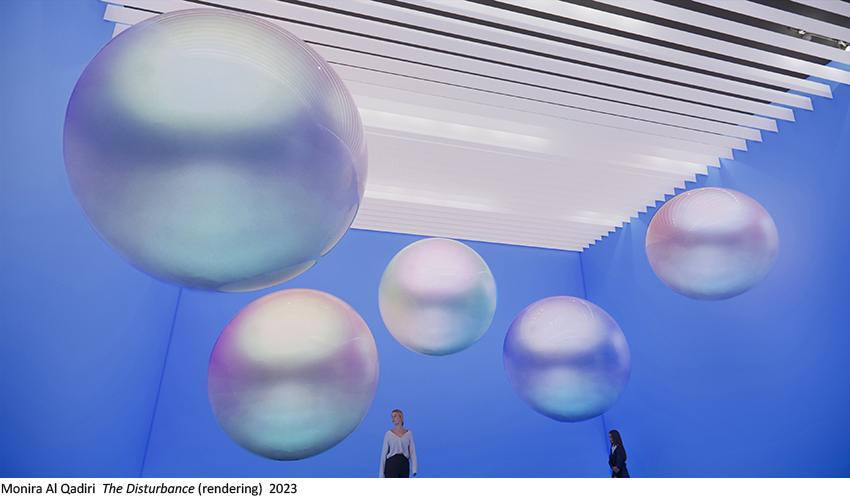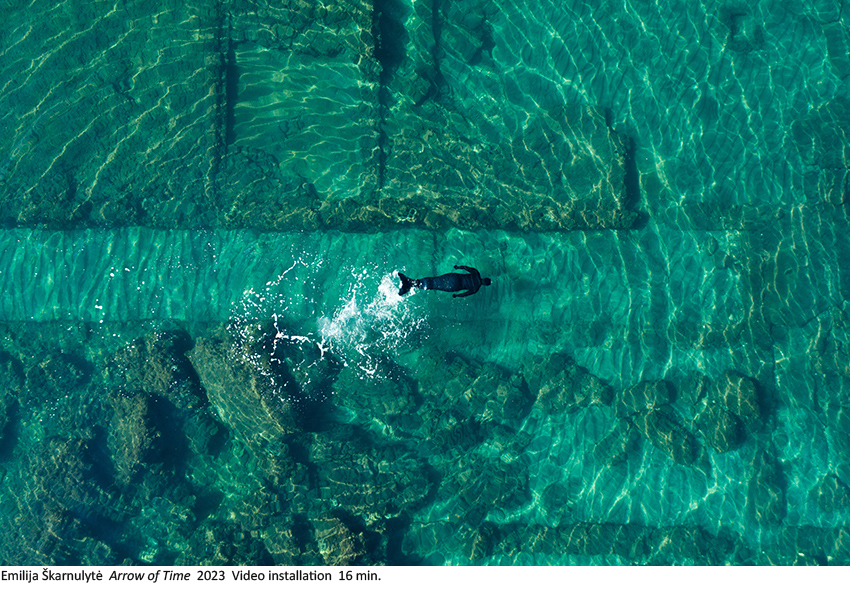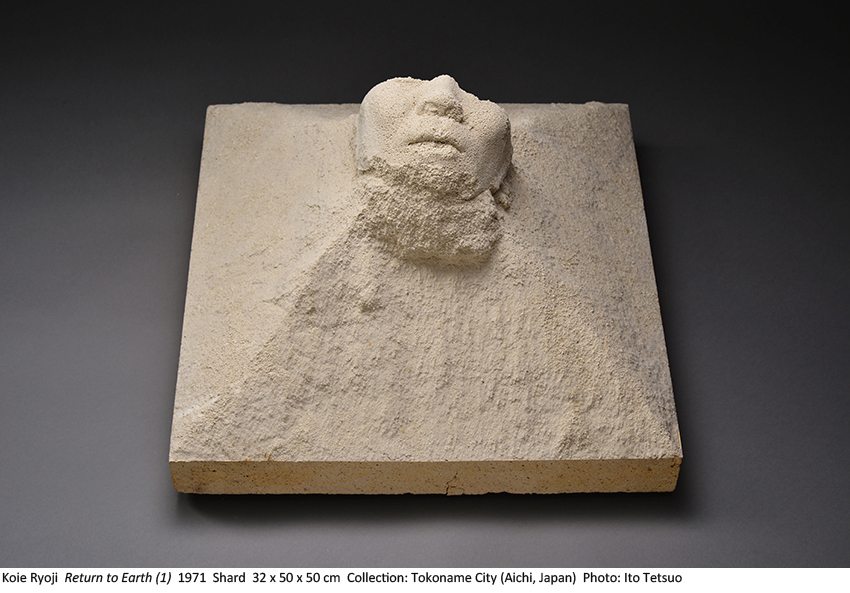Mori Art Museum 20th Anniversary Exhibition Our Ecology: Toward a Planetary Living at Mori Art Museum
The Mori Art Museum is holding its 20th Anniversary Exhibition, “Our Ecology: Toward a Planetary Living” from October 18, 2023 (Wed.) to March 31, 2024 (Sun.). In 2023, Tokyo had a record 88 midsummer days with temperatures exceeding 30°C. Global warming and other environmental issues are becoming more and more familiar to us, and we are beginning to feel that they are urgent problems. This exhibition proposes that we consider environmental and other issues from a variety of perspectives. What are our thoughts and what do we need to do now?
Rather than presenting answers to these questions, this exhibition provides viewpoints and opportunities to think about them through works of contemporary art and the actions of the artists, and encourages the creation of dialogue among viewers. If you are even slightly concerned about environmental issues, why not take part in this exhibition?

Consider the Impact of Humanity on the Earth in Just “One Second.”
If we were to imagine the 4.6 billion years since the birth of the earth as one year, human history would be equivalent to about 4 hours. The time period from the industrial revolution that began in the late 18th century to the present would only be about one second. The impact that humans have had on the earth in just this one “second” has been so great that the environmental crisis has become an urgent issue, and many exhibitions have been held on this important theme in the international art scene.
Also, the new definition of what a museum is that was adopted by the International Council of Museums (ICOM) in 2022 clearly states that museums are places that foster sustainability along with inclusiveness and diversity.
How can contemporary art confront today’s environmental crisis, and how can it raise people’s awareness of the issue as one that we face? This exhibition provides an opportunity for visitors to read about the concepts, metaphors, materials, and production processes of 34 artists from 16 countries, and to consider possibilities for the future together.

The exhibition space and the planning of the work itself are sustainable.
This exhibition is planned and organized as a sustainable exhibition, minimizing the transportation of artwork and exhibition-related materials and recycling resources as much as possible. You will notice these points right away as you enter the exhibition hall. For example, you will see this in the partial use of the exhibition walls and wall panels from the previous exhibition, and the use of the world’s first 100% recyclable gypsum wallboard. In addition, in order to reduce the transportation of the works themselves as much as possible, they are attempting to have the artists themselves come to Japan and create new works.

Nina Canell’s “Muscle Memory (5 Tonnes),” displayed near the entrance to the exhibition, symbolizes this attitude. We can walk on the shells of marine mollusks (scallop shells) from the Sea of Okhotsk laid out on the floor and enjoy the sensation and sound, while at the same time easily imagining that the shells will be shattered to pieces by the end of the exhibition’s approximately six-month duration. The crushed shells will be further reused as raw material for cement after the exhibition. Although the amount that can be obtained as a raw material may not be large, it actually makes you realize how difficult it is to produce resources by hand.

The exhibition will also feature many other works that reuse everyday objects found in the environment as materials. These include Jef Geys’ work in which he considers the Mori Art Museum as an environment and surveys and collects plants growing in a one-kilometer radius to create pressed flowers; Kate Newby’s installation incorporating objects found on her way from Roppongi to Ginza; Daniel Turner’s painting installation using scrap wood from a hospital near Tokyo; and Yasura Takeshi’s installation juxtaposing marble and slag made of garbage melted at high temperatures.
Chapter 2, which greatly promotes and embodies “Ours”.
Chapter 2 of the overall exhibit will play a distinctive and important role in getting the Japanese themselves to consider environmental impacts as their own problem. This chapter, titled “Chapter 2: Return to Earth – Art & Ecology in Japan, 1950s-1980s,” was written by guest curator Bert Winther-Tamaki (Professor, Art History Department and Visual Studies Ph. D. Program, University of California, Irvine) to introduce how Japanese artists from the 1950s to the 1980s dealt with the social issues of pollution and radioactive contamination at the time.
During Japan’s period of rapid economic growth from 1955 to 1973, the country experienced serious environmental problems caused by natural disasters, industrial pollution, and radioactive contamination. In this chapter, you can trace how the expressions and content of representative Japanese artists of each period have changed by examining them chronologically from the 50s, 60s, 70s, and 80s.

Just recently, on September 27, 2023, the Osaka District Court ruled in a Minamata disease lawsuit in which the plaintiffs were people who had emigrated from Kumamoto Prefecture without realizing they had been affected and were not eligible for relief measures. This means that Japan has yet to solve all the environmental problems that occurred during this period. We should realize the depth of what has happened and how difficult it is to return to the original state, or “return to the soil.”
The exhibition presents a diverse range of expressions, from historical works by international artists to new works created specifically for this exhibition, presented in four chapters. You are invited to feel, learn, and think about them.

Exhibition Structure
*The following text is taken from publicity materials published by the Mori Art Museum.
Chapter 1: All Is Connected
Everything on our planet, living or otherwise, is part of a cycle of sorts, and through that cycle everything, tangible and intangible, is connected. This first chapter presents works by contemporary artists who give expression to that cycle and the process of connectionin different ways.

Chapter 2: Return to Earth – Art & Ecology in Japan, 1950s-1980s
During its postwar era of high-growth Japan suffered from serious environmental problems triggered by natural disaster, industrial pollution, and radioactive waste. As a regional environmental art history, this chapter centers works by Japanese artists and their engagement with environmental issues over the decades, set out in chronological order from the 1950s through the ’60s, ’70s and ’80s, simultaneously tracking major developments in expressive technique.

Chapter 3: The Great Acceleration
Homo sapiens has availed itself of all the planet’s available resources to advance civilization and propel industrialization, modernization, and globalization. Yet as the suggested geological classification of “Anthropocene” proposes, accelerated advances in science and technology and industrial society since the industrial revolution have changed the Earth’s environment in a very short space of time. This chapter takes a fresh look at the relationship between humans and the Earth’s resources from a broader perspective, analyzing these pressing issues for humanity from a critical viewpoint in works that address the cultural and historical underpinnings of the current state of the world.

Chapter 4: The Future Is within Us
The current environmental crisis is the outcome of our own personal choices – and to break our current impasse will require us as humans to change our way of being. What options remain for the future? This chapter attempts to reframe the future, and reflect on the forms of intelligence we should rely on, be that by taking in and utilizing the knowledge of non-western worldviews, expressing doubts about modernist progress and principles of endless growth, activism/advocacy, adopting indigenous and feminist perspectives, spirituality, or exploring the potentials and risks of digital innovation.


| Title | Mori Art Museum 20th Anniversary Exhibition Our Ecology: Toward a Planetary Living |
| Period | 2023.10.18 [Wed] – 2024.3.31 [Sun] |
| Venue | Mori Art Museum (53F, Roppongi Hills Mori Tower) |
| Address | Roppongi Hills Mori Tower, 6-10-1 Roppongi, Minato-ku, Tokyo, Japan |
| Official Website | https://www.mori.art.museum/en |
| Opening Hours | 10:00-22:00 * 10:00-17:00 on Tuesdays * Open until 22:00 on Tuesdays of March 19, 2024. * Admission until 30 minutes before closing. |
| Closed | Open every day during this exhibitions |
| Ticket Information | * It is encouraged to make advance booking for a designated date/time slot and purchase the admission ticket on the booking website. * Admissions without advance bookings will be allowed so far as the time slots have not filled up on the day of your visit. * ( ) = Admission when purchased online. * Audio Guide combo tickets (+ 500 yen) are also available for purchase. * All prices include tax. * For more about Admission. |
| Admission [Weekdays] |
Adults 2,000 yen (1,800 yen) Students (University/High school) 1,400 yen (1,300 yen) Children (Age 4 through Junior High School Students) 800 yen (700 yen) Seniors (Ages 65 and over) 1,700 yen (1,500 yen) |
| Admission [Saturdays, Sundays and Holidays] |
Adults 2,200 yen (2,000 yen) Students (University/High school) 1,500 yen (1,400 yen) Children (Age 4 through Junior High School Students) 900 yen (800 yen) Seniors (Ages 65 and over) 1,900 yen (1,700 yen) |

